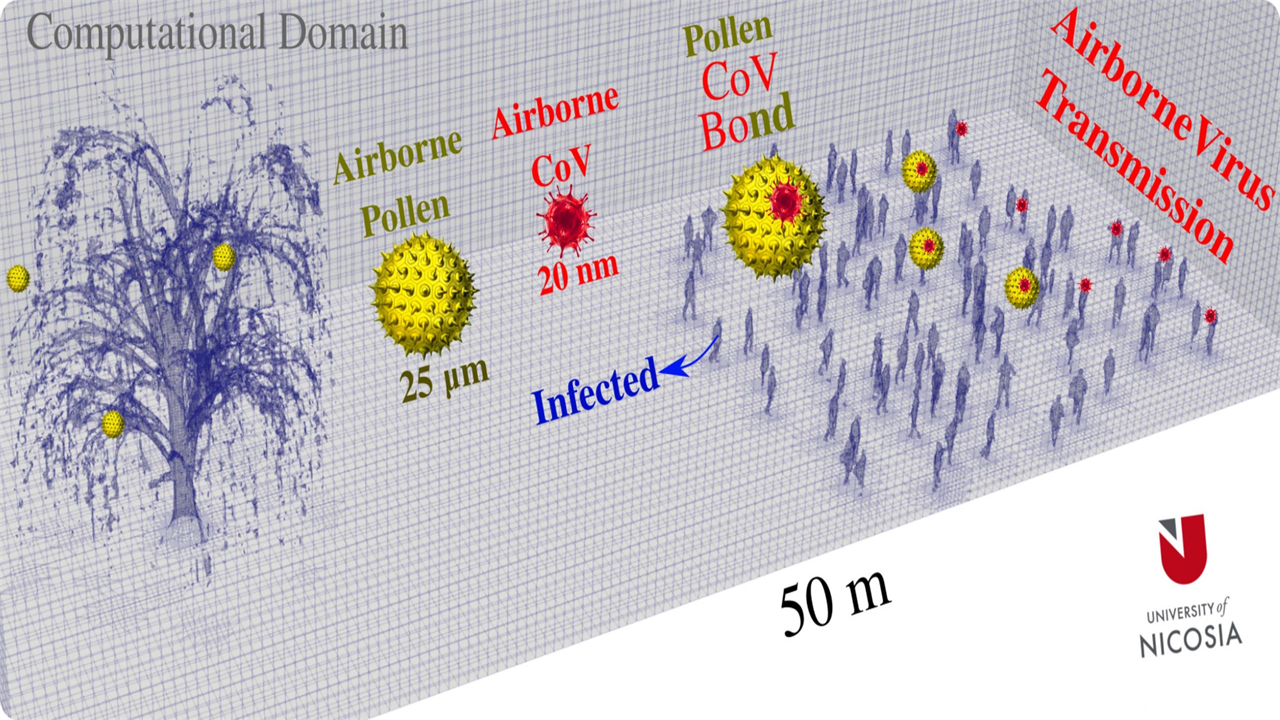Tree Pollen Facilitates COVID-19 Virus Spread – Carries SARS-CoV-2 Particles Farther
0 View
Share this Video
- Publish Date:
- 22 June, 2021
- Category:
- Covid
- Video License
- Standard License
- Imported From:
- Youtube
Tags

A realistic calculation model predicts an important correlation between pollen in the air and the transmission of coronavirus. Credit: Talib Dbouk
Computer model mimics a willow tree and a nearby crowd to provide a new perspective on social distancing measures.
Most models explaining how viruses are transmitted focus on viral particles escaping a person to infect a nearby person. A study on the role of microscopic particles in how viruses are transmitted suggests that pollen is nothing to sneeze at.
In Physics of Fluids, from AIP Publishing, Talib Dbouk and Dimitris Drikakis explore how pollens facilitate the spread of an RNA virus such as the COVID-19 virus. The study uses advanced computational approaches to analyzing fluid dynamics to mimic the pollen movement of a willow tree, a prototypical pollen emitter. Airborne pollen grains contribute to the spread of airborne viruses, especially in crowded environments.
“To our knowledge, this is the first time that we have shown through modeling and simulation how airborne pollen microbeads are transported in a light breeze, contributing to the transmission of airborne viruses in crowds outdoors,” Drikakis said.
The researchers noted a link between COVID-19 infection rates and the pollen concentration on the National Allergy Map. Each pollen grain can contain hundreds of virus particles at once. Only trees can release 1,500 grains per cubic meter into the air on rough days.
The researchers set to work by creating all the pollen-producing parts of their computational willow tree. They simulated outdoor gatherings of about 10 or 100 people, some of which shed COVID-19 particles, and subjected the people to 10,000 pollen grains.
“One of the big challenges is recreating an extremely realistic environment of a mature willow tree,” Dbouk said. “This included thousands of tree leaves and pollen grains, hundreds of stems and a realistic collection of a crowd of about 100 individuals about 20 meters from the tree.”
By tuning the model to the temperature, wind speed and humidity of a typical spring day in the US, the pollen passed through the crowd in less than a minute, which could significantly affect the virus load carried along and increase the risk of infection.
The authors said the 6-foot distance often quoted for COVID-19 recommendations may not be enough for people at risk for the disease in crowded pollen-rich areas. New recommendations based on local pollen levels can be used to better manage infection risk.
While drawing attention to other forms of COVID-19 transmission, the authors hope their study sparks further interest in plant fluid dynamics.
Next, they seek to better understand the mechanisms underlying the interaction between airborne pollen grains and the human respiratory system under different environmental conditions.
Reference: “On pollen and airborne virus transmission” by Talib Dbouk and Dimitris Drikakis, June 22, 2021, Physics of Fluids.
DOI: 10.1063/5.0055845










